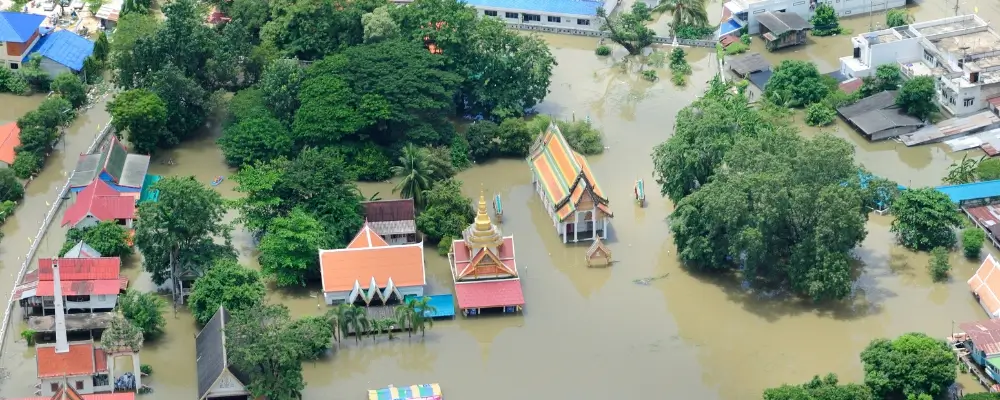In today’s increasingly unpredictable world, the significance of having a robust Disaster Management Plan (DMP) cannot be overstated. This blog delves into the essence of a DMP, outlining its critical role in safeguarding communities and organizations against the devastating impacts of natural and man-made disasters.
We’ll guide you through the meticulous process of preparing and implementing a DMP, from conducting thorough risk assessments to engaging in recovery efforts post-disaster. Our aim is to equip you with the knowledge and tools necessary to develop a comprehensive plan that not only mitigates risks but also enhances resilience, ensuring a swift and effective response in times of crisis.
What’s Disaster Management Plan?
A Disaster Management Plan (DMP) is a strategic document that outlines the procedures, strategies, and actions to manage and mitigate the impacts of disasters, whether natural or man-made. The primary goal of a DMP is to minimize the damage and disruption caused by disasters and to ensure a quick, effective, and coordinated response to emergency situations. The plan typically covers various phases of disaster management, including:
- Prevention: Measures taken to prevent the occurrence of a disaster or to reduce its impact.
- Preparedness: Activities and preparations made in advance to ensure an effective response to the impact of disasters, including emergency response plans, stockpiling supplies, and training responders.
- Response: Actions taken in the immediate aftermath of a disaster to save lives, protect property, and meet basic human needs.
- Recovery: Steps to return the community to normal or near-normal conditions, including the restoration of basic services and the repair of physical, social, and economic damages.
Effective disaster management plans are comprehensive and considerate of the specific vulnerabilities, capacities, and needs of the community or organization they are designed to protect. They involve the collaboration of various stakeholders, including government agencies, non-governmental organizations (NGOs), community groups, and the private sector, to ensure a coordinated and efficient approach to disaster management.

Preparation and Implementation Process Of Disaster Management Plan
Preparing and implementing a Disaster Management Plan (DMP) involves a series of strategic steps to ensure that an organization or community is ready to respond effectively to disasters. Here’s a general guide on how to prepare and implement a DMP:
1. Risk Assessment
- Identify Hazards: Determine what types of natural or man-made disasters could potentially impact the area or organization. This could include floods, earthquakes, fires, terrorist attacks, pandemics, etc.
- Analyze Vulnerabilities: Assess the susceptibility of the community or organization to these hazards. Consider factors like location, population density, infrastructure, and resources.
- Estimate Risks: Evaluate the potential impact of identified hazards, taking into account the likelihood of occurrence and the severity of their consequences.
2. Planning
- Set Objectives: Define clear, achievable goals for the disaster management plan, such as minimizing loss of life, protecting property, and ensuring rapid recovery.
- Develop Strategies: Outline specific strategies for disaster prevention, preparedness, response, and recovery. This should include roles and responsibilities, communication plans, and resource allocation.
- Create Plans: Develop detailed action plans for each phase of disaster management. This includes evacuation plans, emergency response procedures, and recovery plans.
3. Resources and Logistics
- Identify Resources: List all available resources, including personnel, equipment, facilities, and financial resources, that can be mobilized in the event of a disaster.
- Establish Partnerships: Collaborate with local authorities, NGOs, community organizations, and the private sector to ensure a coordinated response.
- Logistics Planning: Plan for the logistics of delivering supplies, equipment, and services before, during, and after a disaster.
4. Training and Exercises
- Training Programs: Develop and conduct training programs for emergency responders, staff, and volunteers on their roles and responsibilities within the DMP.
- Conduct Drills and Simulations: Regularly organize drills and simulation exercises to practice emergency response procedures and identify any weaknesses in the plan.
5. Implementation and Monitoring
- Implement the Plan: Put the disaster management plan into action, ensuring that all stakeholders are aware of their roles and responsibilities.
- Continuous Monitoring: Regularly monitor hazards and review the effectiveness of the disaster management plan, making adjustments as necessary.

6. Review and Update
- Evaluate Performance: After drills, simulations, or actual disaster events, evaluate the performance of the disaster response and identify areas for improvement.
- Revise the Plan: Regularly update the disaster management plan to reflect new risks, lessons learned, and changes in resources or capabilities.
7. Communication
- Internal Communication: Ensure effective communication channels within the organization or community for the dissemination of information and coordination of response efforts.
- Public Information: Develop a plan for communicating with the public before, during, and after a disaster, including emergency alerts, updates, and recovery information.
Implementing a Disaster Management Plan is an ongoing process that requires commitment, coordination, and cooperation among all stakeholders involved. It’s crucial to foster a culture of preparedness and resilience to enhance the effectiveness of disaster response and recovery efforts.
Conclusion
In conclusion, the development and execution of a Disaster Management Plan is a critical endeavor that demands meticulous planning, steadfast commitment, and continuous improvement. By understanding the risks, preparing comprehensively, and implementing effectively, communities and organizations can significantly mitigate the impacts of disasters. This process not only safeguards lives and assets but also enhances resilience, ensuring a quicker recovery and a return to normalcy.
Remember, the strength of a Disaster Management Plan lies in its ability to adapt and evolve, incorporating lessons learned from past incidents to better prepare for future challenges. Through collaboration, education, and proactive measures, we can build a safer and more prepared society.

